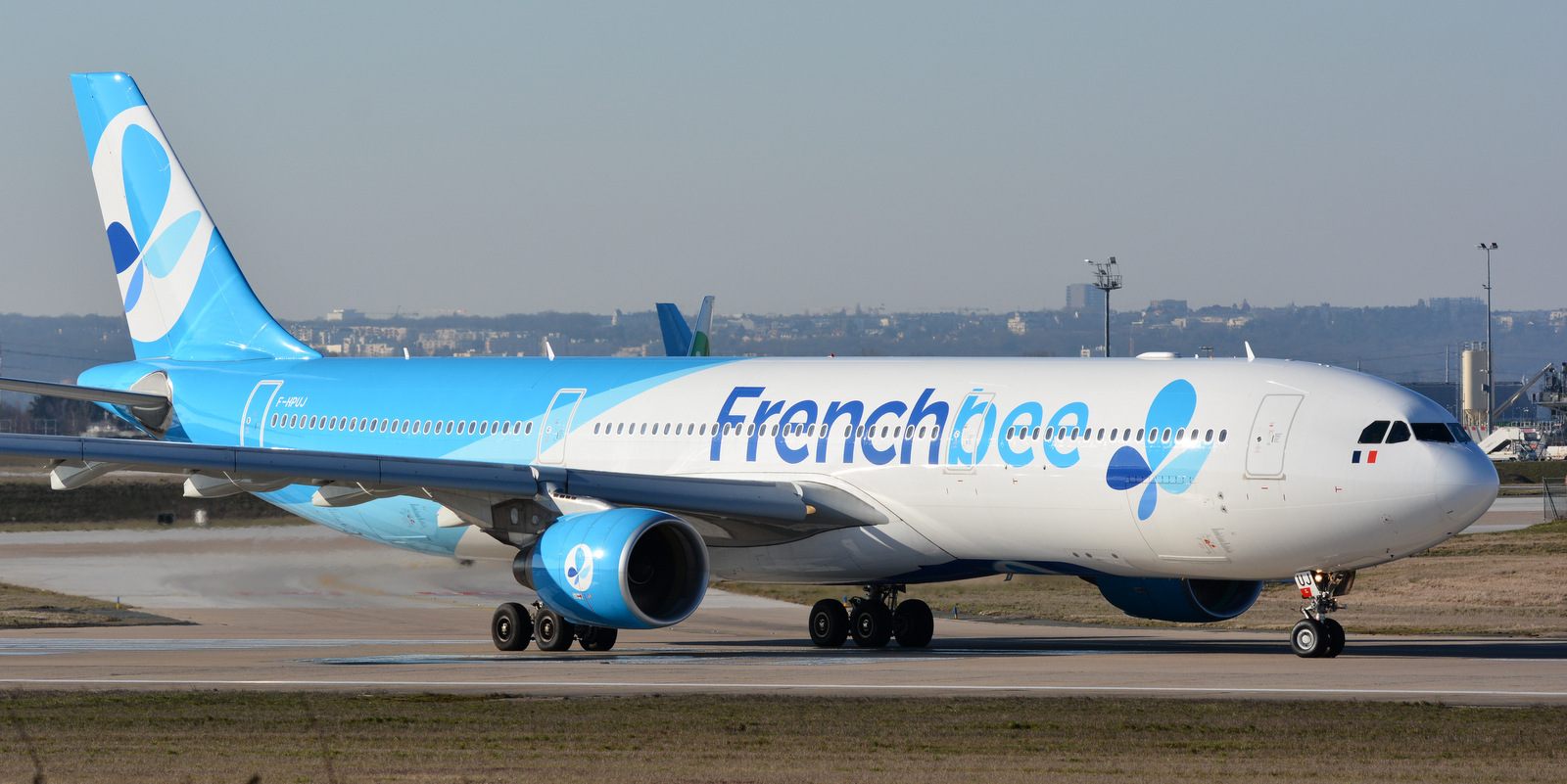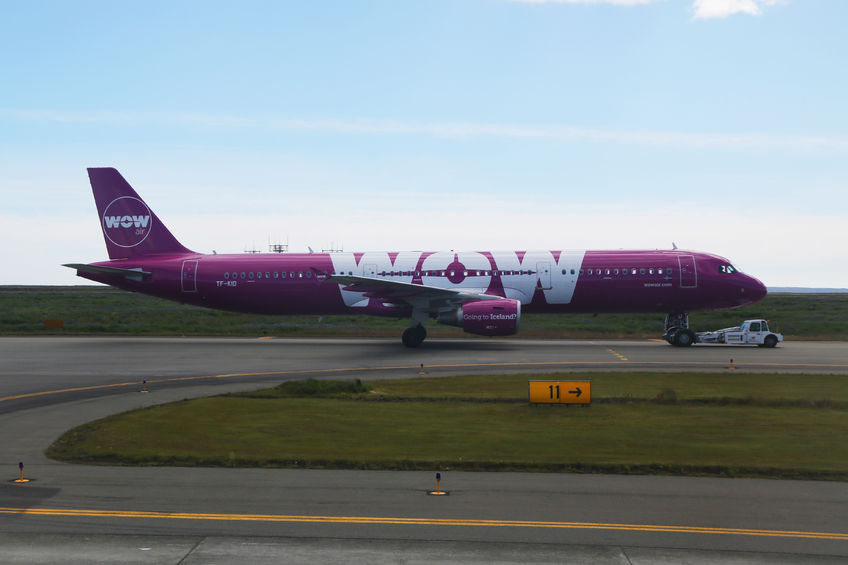Ben Baldanza is the former CEO of Spirit Airlines, a board member of JetBlue, and a former board member of transatlantic low cost carrier Wow Air. In his Airlines Confidential podcast he talked about French long haul low cost airline French Bee’s plan to outfit two new Airbus A350s they’ll take delivery of this year with 488 seats, about 50% more seats than most airlines put on the plane – and why such a plan is likely to fail.
- Cost advantage isn’t as big for long haul flying as it is for short haul. Even higher cost airlines have a long distance to amortize their seat costs over, the difference in cost per passenger mile flown isn’t nearly as great for long haul as it is for short haul. So Ryanair and easyJet can significantly undercut British Airways within Europe, but their advantages diminish if they were to fly to the U.S. or Asia.
- Long haul routes are highly seasonal, low cost carriers can’t fill so many seats at even low prices the whole year French Bee may be able to fill 488 seats in the summer, but not in the winter, and big new aircraft like an A350 incur lease payments year round (even if engine costs are on a power by the hour agreement).
- Passenger experience matters more for long haul Even American Airlines still offers seat back entertainment on its widebody aircraft, and puts ovens in the coach galleys as well. People will put up with lack of comfort and other experiential items for a 2-3 hour trip, but it becomes far more challenging on an 8 or 12 hour journey.

Credit: Olivier from FRANCE via Wikimedia Commons
Baldanza previously argued Wow Air failed flying transatlantic because of rising costs in part due to an unwillingess to hire cheap labor, because Iceland is too seasonal to succeed as their hub, and because the Airbus A330 is too expensive a plane (they should have been flying narrowbodies across the Atlantic). I thought that explanation while probably true was incomplete.
Wow Air faced significant low cost competition from larger carriers offering more destinations and was unable to fill planes. It wasn’t just a cost story, but a revenue story irrespective of fares. That does reinforce, however, that they shouldn’t have been operating widebodies – too much capacity.

Wow Air, Copyright: zhukovsky / 123RF Stock Photo
In non-pandemic times full service carriers gain a mix of traffic, high yield business fares and low price leisure fares. They’re more likely to attract corporate contracts as well as regular repeat business. Low cost carriers aren’t as diversified.
Since American Airlines unveiled ‘Super Saver’ fares in the late 1970s, large full service carriers have known that they could offer both a high price and low price product on the same plane, filling marginal seats they’re flying anyway at the same price as low cost carriers offer while offering a better product along certain dimensions. As long as carriers can segment passengers so they don’t sell a fare cheaply to someone willing to pay full freight, they can compete on price.
United Airlines CEO Scott Kirby has said low cost carriers cannot be successful since United can match fares. He’s wrong, though. They can succeed flying short haul, and have done so for years. The challenge comes flying long haul.


Low cost means different things depending on culture.
In the US, low cost attracts low class. People who have absolutely no manners. This makes the experience miserable no matter how plush the seat is or how much in flight entertainment is offered. The US government panders to low class whiners.
In Europe and Asia, low cost works because the population is better behaved across the board.
Low cost has been successful in Asia on longer routes and Norwegian was somewhat successful and had they been around for longer and no Covid they would’ve been more successful.
Good analysis. I’ve been wondering about this ever since Joe Strummer told the crowd at the Palladium in New York on Sept. 21, 1979 (that’s the concert featured on the cover of London Calling):
“Pack your bags wot you lot an’ all ‘cos we’re all going to ‘ammersmith on a Freddie Laker.”
@P Ness
“In Europe and Asia, low cost works because the population is better behaved across the board.”
What a piece of BS. That aspect has absolutely no impact on the profit bottom line whatsoever. None.
@Marco
Of course it does. Clientele is a big reason people avoid certain businesses.
Class always plays a role, and if an airline flies holiday routes and markets to leisure fliers on a budget, that’s what you’ll get. Europe, if anything, is even more stratified. Concerning behavior, just check out the news items on flight disruptions on UK-to-the-beach routes. Concerning class, WizzAir is a whole airline that connects Eastern European workers and their families to the Western European countries where they work.
I simplify a bit, of course, but LoCos are aiming at a segment of the market, one that doesn’t travel regularly, that travels seasonally, and is extremely price sensitive, often more price sensitive than aware of the total cost of travel. For many such people, a $29 fare is a great deal that can leave extra money for margheritas on Myrtle Beach. For me, that’s actually a $160 fare when the “optional” charges are factors in, plus the added trouble and expense of a slot that makes getting to and from the airport difficult on both ends, and the added risk that IRROPS will not just suck, but cost me more time and trouble.
Transatlantic, the People Express model suffers from the facts that the actual ticket cost is not that different, but the passengers’ risk is higher and “soft costs” disproportionate.
Back in 97, I flew SFO-JFK-ORY for three hundred bucks on back-to-back redeye Tower Air 742 classics. Make the crossing at FL 240 in a middle seat without a working seatbelt, and suddenly spending the extra cash doesn’t sound so bad.
Tangential to the “amortize over long distance” point, LCCs excel in ground ops, in turning the flight around. Legacy carriers rarely schedule less than 90 minutes for short/medium haul (which of course can also absorb delays, which they care more about than LCCs), the best LCCs hit 25 minutes. This compounds when you’re doing 3-5 turnarounds per AC per day. Long haul, this doesn’t matter — 7 hours out, 7 hours back, that’s the day gone. 30m vs 3h turnaround doesn’t give you much of an edge.
There is also much more variation on long haul flying time — an atlantic crossing can vary by 1 hour+ due to wind. You need on-ground buffer, unless your customers are willing to accept routine delays in the several hours range.
The “class” of passengers is not the differentiator between low cost carriers in the US and elsewhere but rather because the US has done more to get low cost competition into as much of the US air transportation system as possible – while legacy carriers serve more airports, leaving few airports as “low cost airports” as exists in other parts of the world.
Low cost carriers in the US have to compete on service, not on routes or because they serve airports which other carriers do not.
French Bee will fail for the reasons noted but also because low cost airlines have to be able to fill all of those seats on a widebody on a year-round basis even as leisure demand is only at its peak for a few months per year everywhere in the world. The failure of Norwegian and several other European low cost carriers does more to remove capacity from transatlantic routes than any other factor right as Euro legacy and US airlines face a multi-year effort to rebuild their finances post-covid.
It is also worth noting that widebody aircraft still have the ability to operate at much lower unit costs and greater revenues because of their ability to carry lots of cargo. It is doubtful that low cost carriers using narrowbody aircraft will ever be able to compete against legacy carriers operating widebody aircraft to/from strong hubs.
You also have to think of equipment management. The successful LCCs also fly their equipment all over the place, within a well-choreographed web. However, with a small, hub-and-spoke long-haul network, you have to bank flights and this can result in absolutely terrible aircraft utilization.
Did anyone notice that FrenchBee is looking mainly at their French DOMESTIC long haul market, which exists for France (Paris to Martinique, Guadeloupe, St. Martin with roughly 8:45 hours flying time as well as Paris to Reunion with 11:30 hours? Not to talk about Tahiti, which is even further away.
French Bee and Air Caraibes belong to the same company. French Bee is competing with Air France and Corsair on the Non Antillean markets as Air Caraibes is doing with Air France on the Antillean (FDF, PTP, SXM) markets.
That is enhanced by seasonal tourist heavy routes to e.g. PUJ and YUL, all for a really price sensitive target group, which is generally the case in those markets.
By the way: Britannia Airways which is now part of the TUI Group did the same long time ago quite successfully. They squeezed an insane amount of seat into their 767-300ER which they were operating all long haul ex UK.